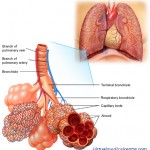Asthma is a serious and growing health-care concern. The prevalence and severity of asthma, as well as its associated morbidity and mortality, have increased in the last few decades. In the United States, 40 million people have asthma. They account for 3 million emergency department (ED) visits, 500,000 hospitalizations, and nearly 6,000 deaths annually. Our institution (Jacobi Medical Center, Bronx, NY) serves a population with a high prevalence of asthma, and has a long history of interest in the management of acute and chronic asthma. In this Reproduction of this article is prohibited without written permission from the American College of Chest Physicians. 
Mechanical ventilation for asthma is a relatively rare occurrence; however, asthma patients who require mechanical ventilation have a high morbidity and mortality. Patients with a severe asthma attack who have survived an episode of endotracheal intubation and mechanical ventilation for acute respiratory failure are designated to have experienced near-fatal asthma (NFA). Several studies revealed that such patients are at increased risk of a similar severe attack and, hence, death in the future. As early recognition of a severe attack and treatment with systemic corticosteroids (SC) is essential to improve outcome for NFA, we analyzed our patients’ knowledge and practices prior to presentation.
The aims of this study were to evaluate patients presenting with NFA for the following: their ability to recognize the increasing severity of the asthma exacerbation; their ability to seek timely help from a health-care provider (HCP); their knowledge of corticosteroid use, inhaled and systemic; their implementation of such therapy; and their hospital course, especially mechanical ventilation and outcomes Generic viagra Australia.
We evaluated 70 episodes of NFA requiring endotracheal intubation and mechanical ventilation, and compared these profiles to 523 patients hospitalized for acute asthma from January 1997 to September 2000. Patient histories and medical records were retrospectively reviewed as part of an ongoing quality improvement project for asthma care. Only those patients who met the criteria for asthma set forth by the American Thoracic Society were included in the study, and any patients with evidence of chronic bronchitis and emphysema were excluded. Data detailing the characteristics of all asthmatics requiring intubation and mechanical ventilation were collected from the time of the patient’s first contact with the HCP until the patient was discharged from the hospital.